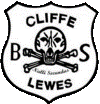A Brief History of Cliffe Bonfire
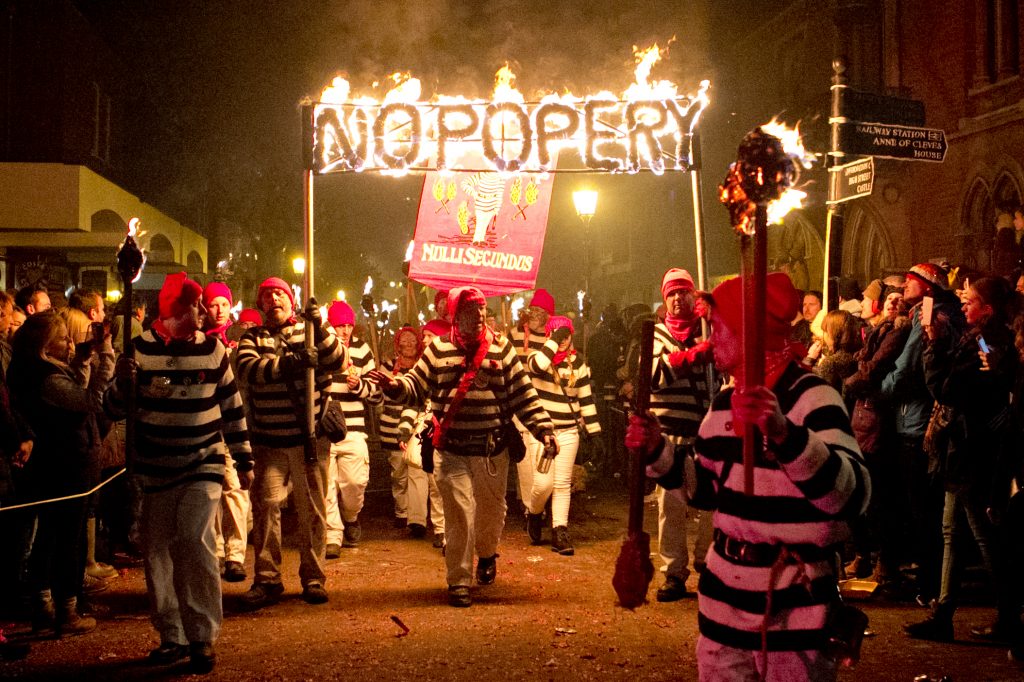
Although the ‘Fifth’ had been commemorated before 1853 in Cliffe, it is generally accepted that the Cliffe Bonfire Society was formed in that year. The Society adopted the ‘Guernsey’ costume for its members and, accompanied by a band, its torchlight processions paraded through the streets of the Cliffe area dragging blazing tar barrels, displaying banners proclaiming ‘No Popery’ and carrying papal and political effigies. With the procession’s arrival at the firesite at Cliffe Corner the proceedings were then conducted by the Society’s ‘Bishop’ who, standing on a raised platform, lambasted the crowd with an anti-catholic and patriotic tirade before condemning the effigies to the fire.
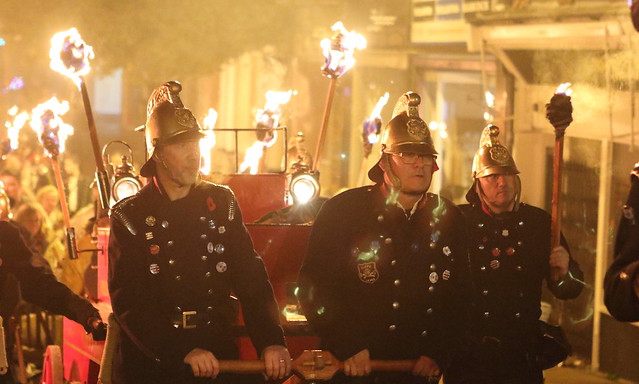
The remainder of the century witnessed an increasingly better organised and elaborate celebration in Cliffe. As the need for disguise declined the striped jerseys of the ‘Smugglers’ gave way to a range of costumes. Initially worn by Society officers to distinguish them, by 1861 costumes included Bedouin Arabs, highwaymen, soldiers, sailors, clowns and North American Indians. During the 1870’s Pioneer groups became a regular feature, the first group to lead the Cliffe’s processions being members of the Cliffe Volunteer Fire Brigade. Reflecting Britain’s expanding Empire, firemen were superseded by Squads of Bengal Lancers and, leading up to World War One, by Indian Princes.
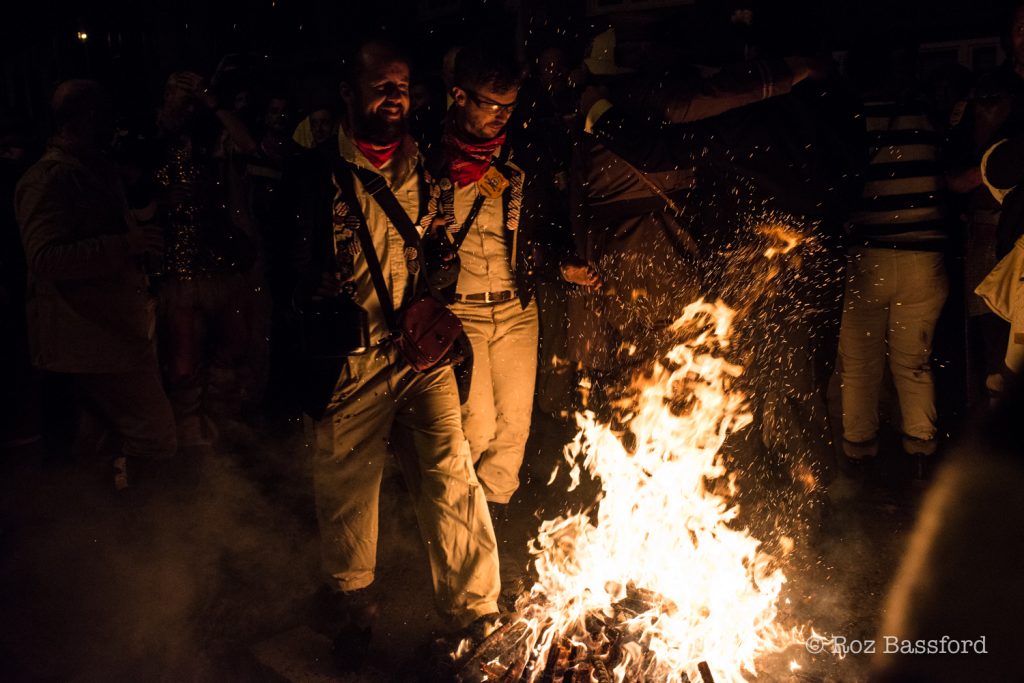
Until 1906, when street fires were banned, Cliffe Corner continued as the firesite, and here the Cliffe’s display increased in size and ingenuity. The traditional effigies of Pope and Fawkes were frequently accompanied into the fire by local notorieties or opponents of Britain’s imperialist ambitions. Elaborate tableaux, three-dimensional structures mounted on a cart, depicting some aspect of current political or local significance became an integral feature of the firesite firework display, becoming increasingly more spectacular as the pyrotechnic artistry of the Society’s ‘tab builders’ improved.
Following World War One Cliffe resurrected its celebrations retaining all the traditional elements including the ‘No Popery’ banner and the burning of a papal effigy. During the 1920’s Cliffe withstood constant criticism for this practice and when, in 1933, the then Mayor, J.C. Kenward, wrote to the Society requesting the discontinuation of the offending effigy, the Cliffe declined.
This determination to maintain the true Bonfire traditions of the ‘Fifth’ led to the Society being ostracised by the other Lewes bonfire societies. In the 1950’s the Bonfire Council attached pre-conditions to Cliffe’s participation in the United Grand Procession, the Society being permitted to join only if the ‘No Popery’ banner was not carried. Cliffe rejected this offer, and while it now plays a full part in the Lewes Bonfire Council’s activities the Society has maintained its independence by refusing to join the ‘United’ procession.
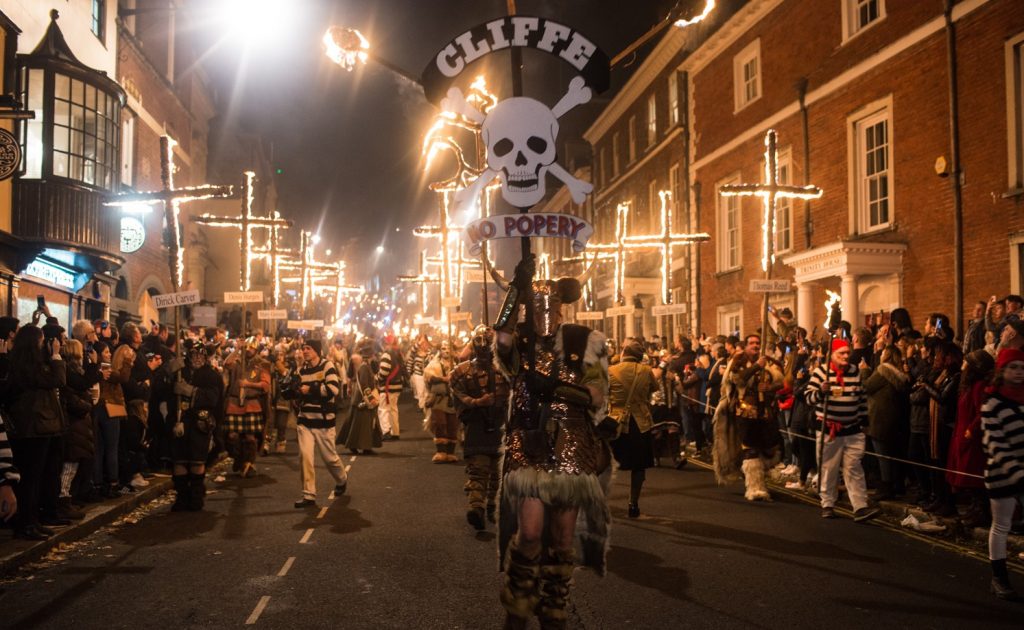
The Cliffe continues to march alone on the ‘Fifth’, taking the view that the Society is ‘Strong enough to Stand Alone’.
However Cliffe has frequently had to overcome ‘behind the scenes’ difficulties. Premises to use for fundraising activities and preparing for the ‘Fifth’ became more difficult to find and the long-time firesite on Malling Hill ceased to meet increasingly stringent firework safety regulations. More recently new firework legislation and concern for crowd safety has prompted Cliffe to form its own firework company, increase co-operation with the police and emergency services and seek a permanent safe firesite.
Since the 1970’s successive committees have worked strenuously, not only to raise the necessary funds to put on the best celebrations in the town, but also to accumulate sufficient funds to secure the long term future of the Society. In 1980 land and buildings were acquired to provide permanent premises, in 1983 the Society became legally constituted, becoming Cliffe Bonfire Society Limited and in 2003 Cliffe’s celebrations have been made secure by the purchase of its own firesite.
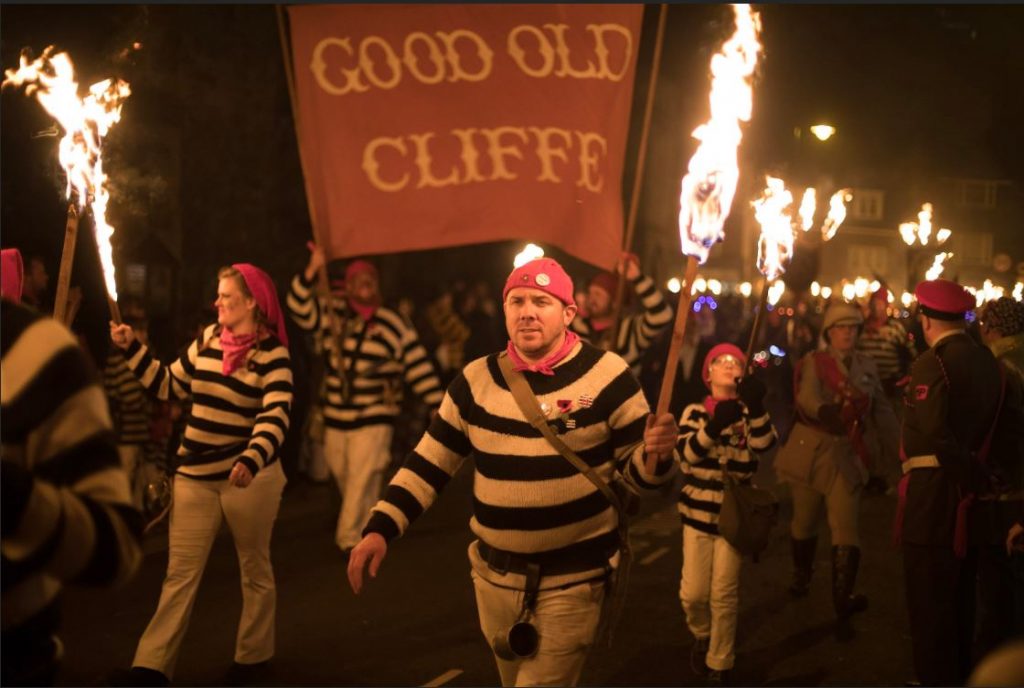
Cliffe has relished the notoriety surrounding its controversial activities. It has drawn strength from this and as the 20th century came to a close Cliffe was growing ever stronger, with a membership heading towards a thousand. With its future now secure, Cliffe will continue to mount ever more spectacular celebrations that are the envy of the rest of Lewes.
© 2003 Jim Etherington
For further reading about the history of the Lewes Guy Fawkes Night celebration see ‘Lewes Bonfire Night’ by Jim Etherington, published by SB Publications available at local bookshops, priced £5.99, or direct from the author, 56 South Way, Lewes, Sussex, BN7 1LY, priced £6.75 including p&p.
